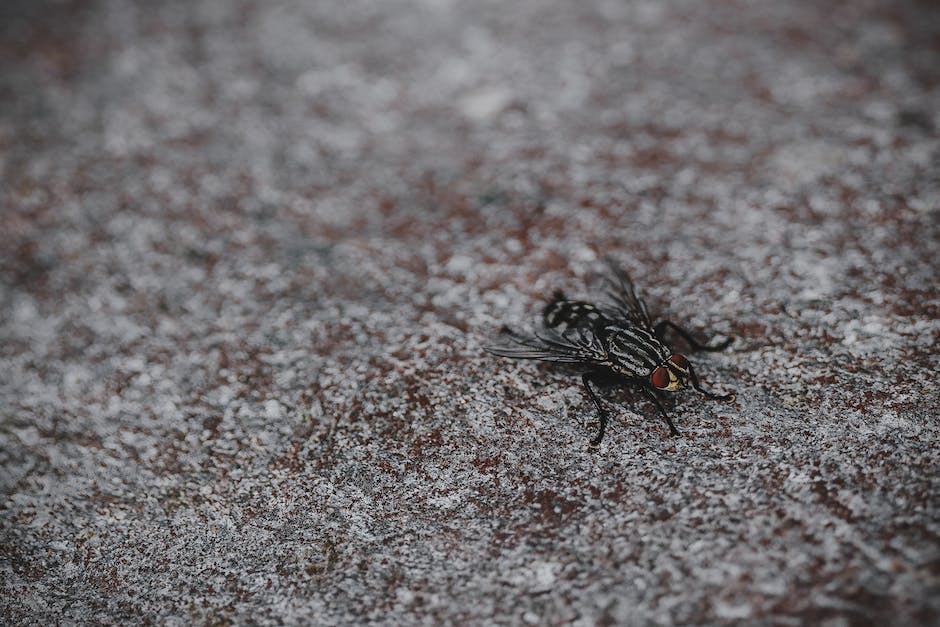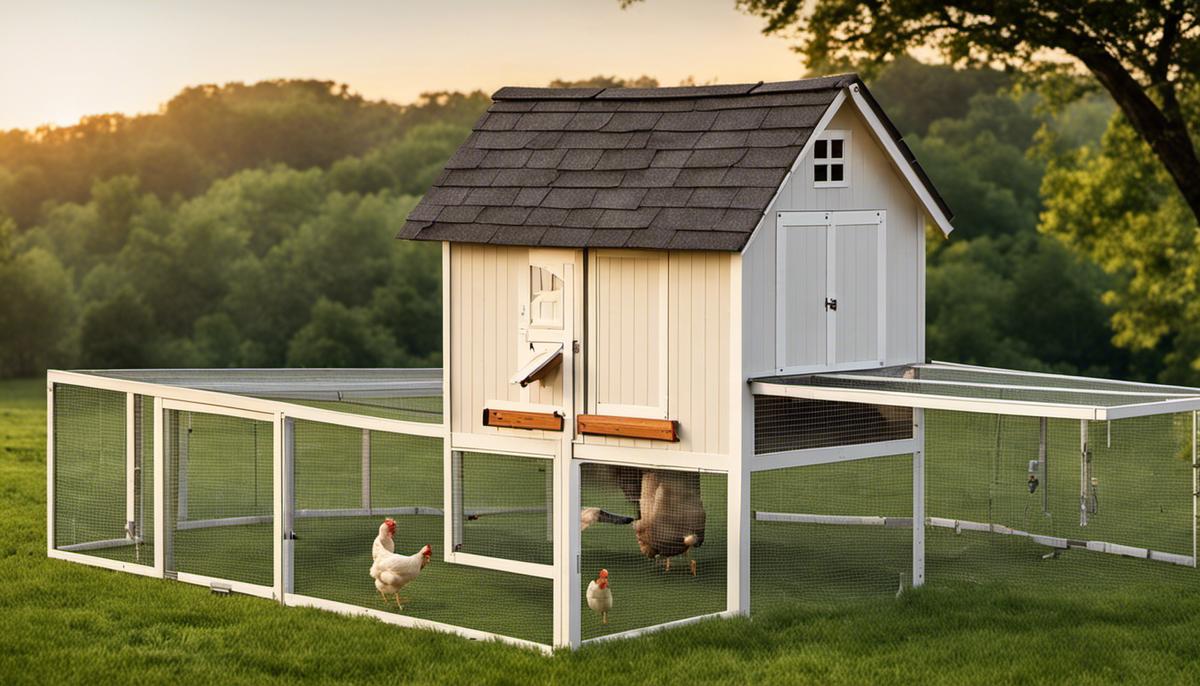We will receive a commission if you make a purchase through our affiliate link at no extra cost to you. Please read our disclosure policy for more information.
In the serene world of poultry farming, maintaining a clean, healthy, and fly-free chicken coop is a task that should always be on the priority list. Flies are not just an annoyance, but also a health hazard for both chickens and those who care for them, capable of transmitting deadly diseases. The cornerstone of understanding how to banish flies from your chicken coop and keep them at bay lies in comprehending the fly lifecycle: from breeding to maturity. This knowledge is instrumental in applying preventive measures at various stages. Furthermore, familiarizing oneself with the array of effective fly control techniques available, such as fly traps, fly predators and botanical controls, is crucial in developing a tailored, effective strategy for your chicken coop. Above all, consistently observing regular coop cleaning and maintenance procedures plays an undeniably significant role in warding off any fly infestations.
Understanding Fly Lifecycle
Understand the Fly Life Cycle for Effective Fly Control!
Read any fly control guide, and you’ll see there’s one crucial component it always circles back on: Understanding the fly life cycle. But why does it boast such importance? Why can’t we just chase the little menaces with a fly swatter? Here’s a fly’s eye view of it all.
Four major life stages:
-
- Eggs Stage: The Starting Point
Imagine this: a female fly laying hundreds of eggs on organic decaying substances – yikes! And within just 24 hours, these eggs hatch into larvae. Fast, right? Trimming down this prolific reproduction is crucial. So, what can you do? Simply keeping your environment clean can prevent flies from finding good breeding grounds.
-
- Larvae Stage: Dodging Pest Control
At this stage, also known as the maggot stage, flies shun daylight, preferring to burrow deep into their breeding ground. They can completely bypass surface level pest control methods with this smart move. Hence, deep-cleaning measures are needed, like digging through compost piles or flushing out drains thoroughly.
-
- Pupae Stage: Resistance Central
With pupae, we’re dealing with dormant, unassuming casings that are secretly nurturing adult flies. This is a stage where flies gain high resistance to several pest controls due to their protective shells. To counteract this, regular and thorough cleaning habits highlighted earlier must be upheld.
-
- Adult Flies: The Annoyance Peaks
As soon as the adult flies emerge, their life becomes a non-stop mission to breed. After all, an adult fly only lives for about a month, so they try their best to make the most of it! Aggressive pest control measures can be applied here, including fly traps, bug zaps, and more.
Knowing each of these stages and how they act at certain periods allows for targeted and efficient control strategies. By studying a fly’s life cycle, you gain the advantage of predicting their next move and thwarting their survival strategies at every turn.
Rather than blindly combating these airborne pests, an understanding of the fly lifecycle lets one strategize and lay out a comprehensive control plan that’s more likely to work. It’s not just about knowing your enemy – it’s about knowing them very, very well! So, next time you see those fly infestations burgeoning, remember, you’ve got the knowledge to clip their wings effectively. Happy fly fighting!

Effective Fly Control Techniques
The Art of Outsmarting Flies in Your Chicken Coop
Deep diving into the world of chicken tendering, there’s an understanding gained of the potential nuisances. A frequent unwelcome guest in this endeavor is the persistent fly. The significance of knowing about their life cycle has been unraveled and the steps for handling each stage detailed immaculately. Now, let’s roll up our sleeves and harp onto supplementary techniques to keep these pests at bay.
An ounce of prevention, as they say, is worth a pound of cure. Let’s start with the principle, cultivation of the clean coop. Maintain sanitation by promptly removing chicken waste, spilled feeds, and discarded egg shells. These items present havens for flies and their nascent offspring. Regular cleaning decreases the allure of your coop to flies substantially.
Next, let’s talk population control. Use Flybuster Fly Traps and sticky tape effectively. Hang fly strips and place traps in strategic locations. Focus on the coop’s interior, as flies are most common in enclosed spaces. Additionally, consider using fly zappers or bug lights, especially during warmer seasons. These tools electrocute flies upon contact, providing a drastic reduction in fly population.
 A key point to consider is that, flies loathe essential oils. Spraying a concoction of essential oils like eucalyptus, lemongrass, and peppermint in and around the coop wards off these pests. This serves as a harmless, yet formidable defense mechanism against further infestations.
A key point to consider is that, flies loathe essential oils. Spraying a concoction of essential oils like eucalyptus, lemongrass, and peppermint in and around the coop wards off these pests. This serves as a harmless, yet formidable defense mechanism against further infestations.
Garden grade Diatomaceous earth is another excellent weapon in the arsenal against flies. It physically harms flies, interrupting their intrinsic biological functions. Sprinkle this powder in your chicken’s dust bath areas, coop, and run. Do remember to use protective masks while handling this product as it could lead to respiratory issues.
Additionally, did you know chickens eat larvae? Encourage natural predation, this way your chickens get added protein and the fly life cycle gets disrupted. A win-win!
An underrated technique lies in the prudent use of herbs. They not only improve the coop’s odor but also deter flies. Herbs like lavender, mint, and bay leaves can be hung in bunches, while others like basil can be planted around the coop. Flies cannot stand the smell created by these herbs much to the benefits of the chicken and their caretakers.
Last but not least, consider employing natural predators. Erecting birdhouses and bat boxes around the coop could invite these predators in, maintaining balance in the ecosystem and decreasing any burgeoning fly problems.
Keep your coops cheery and defy those dreary flies with these ta
+ngible techniques and knowledge. You’ll surely prevail in this fly versus fowl saga! Fly control is not inherently complex or daunting, but does require consistency and effort. With tenacity you’ll transform your coop into a no-fly zone, and your chickens will thank you!

Regular Coop Cleaning & Maintenance
Perfecting the Harmony Between Cleanliness and Deterrence: The Unseen Pillars of a Fly-Free Coop
While understanding the fly life cycle is a step in the right direction, another quintessential part of maintaining a fly-free chicken coop is to ensure that it’s perpetually clean and adequately maintained.
Cleanliness is a core aspect of deterring flies. Although most prefer to treat the symptoms that is flies, we need to treat the cause, which is generally a dirty coop. Chickens naturally make a mess and flies are almost inevitably attracted to it. Through regular cleaning schedules, the removal of waste, and ensuring a dry environment, the coop’s allure for flies is drastically reduced. Dirty waterer and feeder areas are prime habitat for flies; regular checks not only improve sanitary conditions, but also deter flies.
Maintenance is another factor that goes hand-in-hand with cleanliness. Sealing cracks, small holes, and other potential entrances for flies reduces the level of infestation. This involves regular inspections of the coop structure and immediate repairs when necessary.
Intricate cleaning and stellar maintenance are undoubtedly critical, but coupling them with fly deterrents increases the effectiveness of keeping your coop fly-free. Bet you didn’t think about fly traps and sticky tape, right? These old-school strategies still work wonders for controlling the existing fly population while you work on prevention.
When it comes to keeping your coop clean I recommend Chicken Hemp bedding with Dookashi Deodorizer.
Now, wouldn’t it be wonderful if we could use something that’s not just impactful, but smells heavenly too? Essential oils! Certain kinds like lavender and mint act as strong fly repellents, plus they make the coop smell better. In addition, herbs like basil, lavender, and lemongrass are a brilliant addition to the coop for their aromatic fly-discouraging properties.
You might have thought diatomaceous earth was just for those pesky worms and mites, but it’s a boon in the quest to deter flies as well.
Think about how nature works: a cycle of life and death, predator and prey. Encouraging natural predation by chickens aids in fly control. But it’s not just your chickens that can be your winged soldiers in this battle. Natural predators like birds and bats can put a significant dent in the fly population, especially if you provide nests or housing to encourage their presence.
Living the dream of owning a fly-free coop involves incorporating multiple strategies that include understanding the enemy, maintaining cleanliness, regular inspection, structural maintenance, and employing a mix of traditional, natural, and aromatic deterrents. The targeted approach not only results in a decline in the fly population but also a healthy, clean, and serene environment conducive for your feathered friends. With time and patience, you’ll master the art and witness the joy of a fly-free coop.

Remember, even the best laid preventive strategies will be ineffective without regular coop cleaning and maintaining proper hygiene in your chicken coop. Solid waste management and routine inspections are an integral part of this procedure as well, carefully eliminating potential fly breeding grounds and catching the early signs of infestation. Employing techniques learned about fly lifecycle, fly control mechanisms coupled with good coop maintenance is your best bet in ensuring the health and happiness of your chicken flock. At the end of the day, it’s all about developing a management routine that caters to the specific needs of your chicken coop and adapting when necessary. The key is proactive engagement – it’s much easier and more efficient to prevent a fly infestation than to respond to one.
Would you like to learn more about raising chickens, check out my Article Your Ultimate Guide to Raising Chickens Successfully in this article you’ll learn how to choose the breed that meets your specific needs, create an environment conducive to chicken growth, understand proper health care measures, and decode their intricate social behaviors.



